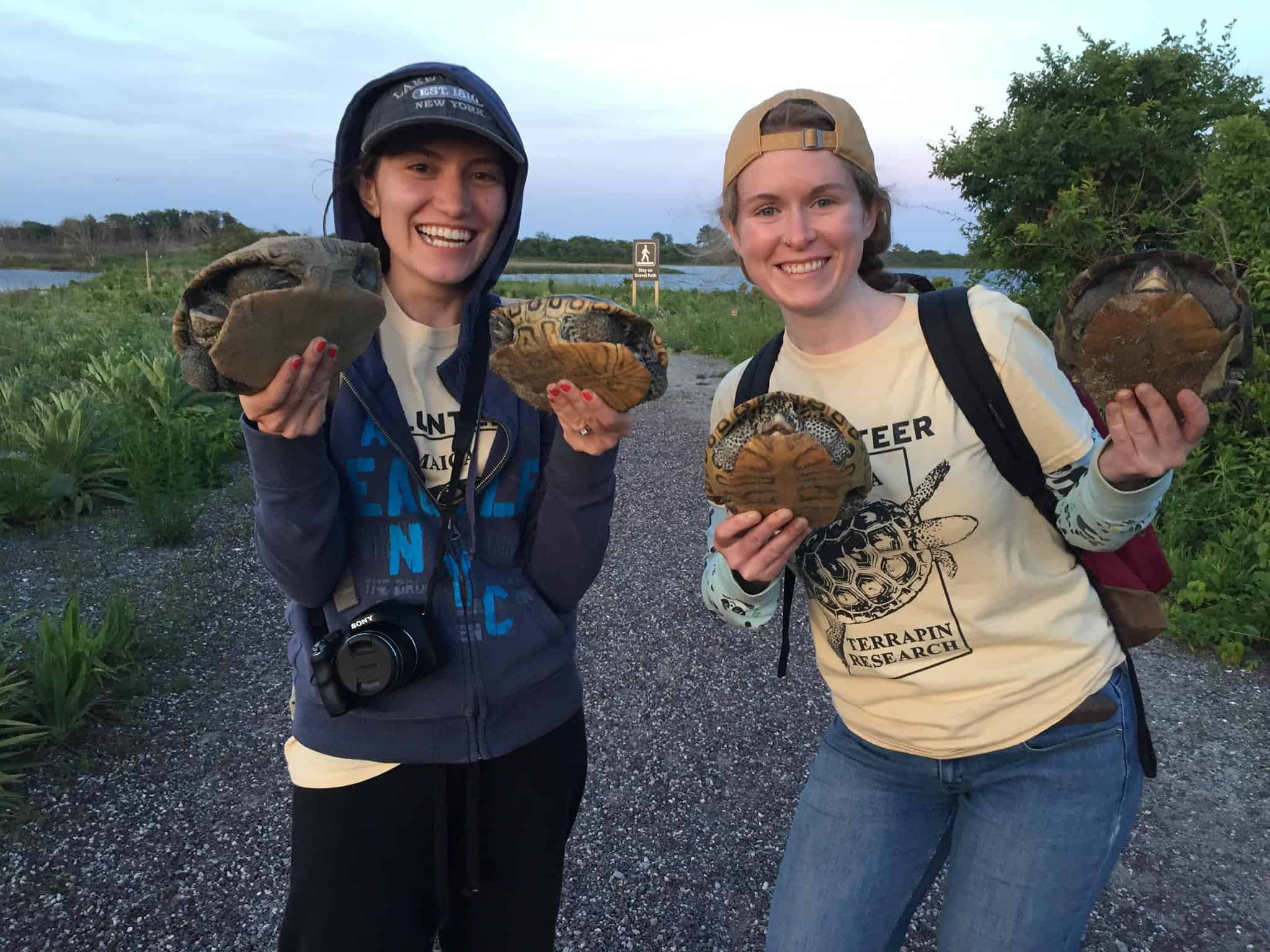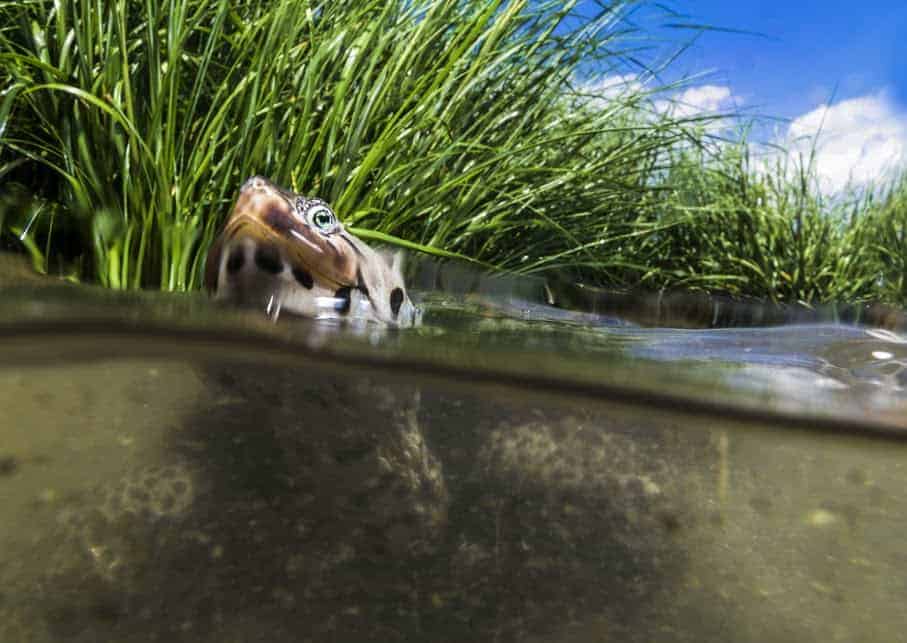Share this article
JWM: Degraded marsh causes loss of diamondback terrapins
Diamondback terrapin populations are shrinking in New York City’s Jamaica Bay, and degraded marsh conditions may be the cause.
These large, long-lived turtles aren’t listed federally under the Endangered Species Act, but they are declining in most of their range.
“The marshes have been degraded through most of Jamaica Bay for 100 years now,” said TWS member Russell Burke, a biology professor at Hofstra University in New York.
Burke has been tracking diamondback terrapins (Malaclemys terrapin) since 1998. Initially, he and his colleagues set out to conduct a short-term study, tracking the reptiles by placing unique notches in individuals’ shells. Over time, technology improved. Burke and his colleagues began implanting the turtles with passive integrated transponders (PIT) tags that lasted for each terrapin’s lifetime. Hundreds of volunteers also helped find terrapins and nests, and collected and recorded morphological data.

Researcher Maria Roe, left, conducted much of the research as part of her master’s thesis at Queens College at the City University of New York with the help of volunteers like Caitlin Dunne on the right. Credit: Russell Burke
In the beginning of his research, Burke’s mostly surveyed on Rulers Bar, a small marshy island in the bay. But in 2009, he started working with colleagues at John F. Kennedy to include terrapins from Joco marsh near the airport in their surveys.
In a study published recently in the Journal of Wildlife Management, Burke and his colleagues analyzed two decades of mark-recapture data to compare these two populations that were only 4.6 kilometers apart.
They found that turtles near the airport were doing significantly better than the ones tracked around Rulers Bar. The latter were growing in numbers, while the Rulers Bar population was declining at least for the 20 years or so examined in the study. Terrapins, overall, had lower survivorship in Rulers Bar compared to JFK.
Sediments and Sandy
Burke speculated that this likely is due to better marsh conditions around the airport. Other studies have shown the plant life by JFK International Airport is fairly diverse and healthy, he said. But in Rulers Bar, the marsh quality has been degrading for some time. Sediment used to wash into Jamaica Bay in larger quantities, but many of the streams that flow into the bay have been dammed up over the past century, depriving the marsh of nutrients.
“Marshes are where [terrapins] feed. It’s where they overwinter,” Burke said, but he added that more research is needed to confirm whether degraded marsh is the culprit when it comes to declining terrapins in Rulers Bar.

Diamondback terrapin populations are doing better in marsh near the John F. Kennedy International Airport than in other parts of Jamaica Bay. Credit: Hyungjun (Peter) Yoon
The long-term analysis also revealed that Hurricane Sandy, which struck the area in 2012, also had a “pretty dramatic effect” on diamondback terrapin survivorship. Turtle numbers dropped in both Rulers Bar and in Joco Marsh following the large storm.
The research also revealed that none of the turtles from either population turned up in the adjacent area—JFK terrapins weren’t recaptured in Rulers Bar and vice versa.
“I don’t understand why the turtles that are in the bad environment don’t switch over to the other one when it’s only a couple of kilometers away,” Burke said. But it speaks to the fact that these turtles are loyal to their specific sites, even if the conditions are bad there. In the case of Rulers Bar, this could be a cause for concern.

A nesting diamondback terrapin. Credit: Eric Rulison
There may be some hope for the turtles, though, since they have overcome adversity before, Burke said. Jamaica Bay has been extremely polluted in the past 100 years due to the past runoff of industrial waste. But the terrapins still persist in water that falls within the limits of New York City speaks to their adaptability to adverse conditions.
“The fact that they survive there at all is pretty amazing,” Burke said, adding that these terrapins are truly urban animals.
This article features research that was published in a TWS peer-reviewed journal. Individual online access to all TWS journal articles is a benefit of membership. Join TWS now to read the latest in wildlife research.







